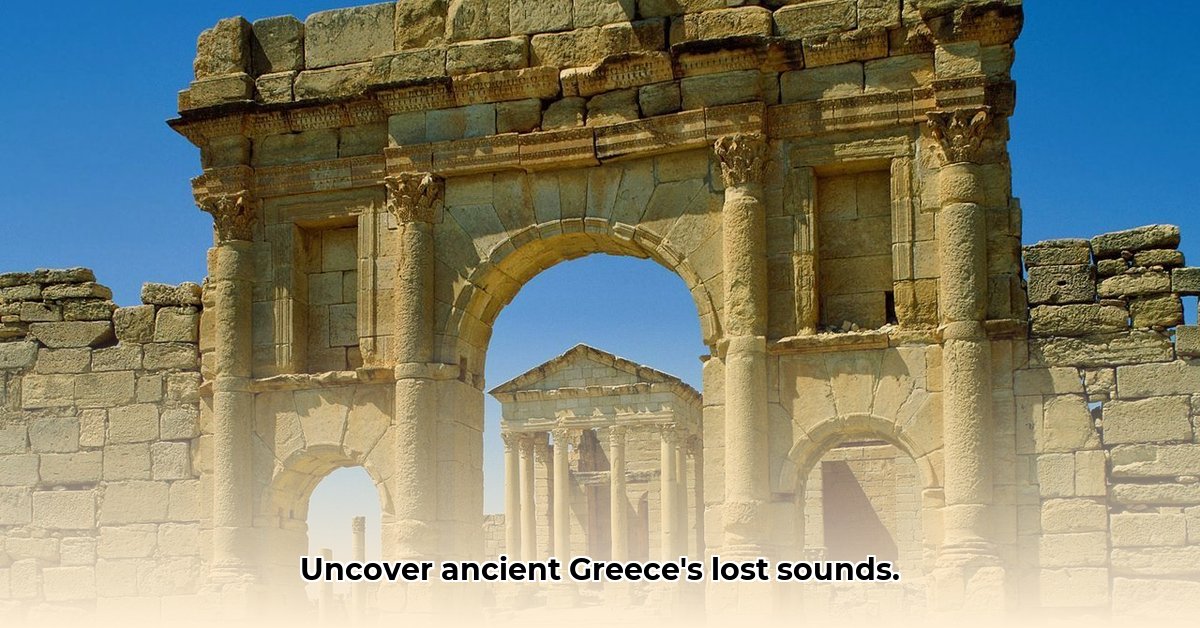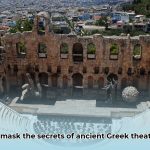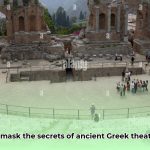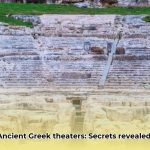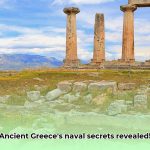What did music sound like in ancient Greece? It was more than mere background noise; it was an integral facet of their lives, permeating religious ceremonies, theatrical performances, and everyday leisure. This article embarks on a journey into the captivating world of ancient Greek musical instruments, spotlighting the elegant lyre, the powerful aulos (a double-reed instrument), and the majestic kithara. We will delve into the techniques employed to play these instruments, explore the underlying theories of their music, and examine their intricate connections to ancient Greek society and beliefs. Prepare to discover how music profoundly reflects the essence of this civilization and its enduring influence on our contemporary world.
Ancient Greece Musical Instruments: Echoes of Culture and Society
Embark on a voyage to ancient Greece, a civilization renowned for its profound appreciation of music’s transformative power. While the original melodies remain elusive, archaeological discoveries and ancient texts provide compelling insights into the instruments utilized and their significant role in shaping daily life. By meticulously piecing together fragmented evidence, we can reconstruct a vivid panorama of ancient Greek music.
The Lyre: A Symbol of Divine Harmony and Social Distinction
Among the most iconic instruments of ancient Greece, the lyre stands out as a symbol of divine harmony and social distinction. Envision a gracefully curved instrument adorned with strings, frequently associated with Apollo, the revered god of music, poetry, and light. The enchanting melodies emanating from the lyre resonated within Greek temples and echoed through celebratory gatherings. Distinct variations, such as the chelys and the kithara, likely existed, each possessing unique sonic qualities and potentially catering to specific musical genres or social strata. The subtle nuances that distinguished these variations remain a subject of scholarly investigation. Did the affluent favor a particular style, while the common populace embraced another? Did diverse tones evoke distinct emotional responses? These intriguing questions continue to fuel scholarly discourse.
The Aulos: A Forceful Wind Instrument for Sacred Rituals and Theatrical Expression
In contrast to the lyre’s serene sounds, the aulos commanded attention with its assertive presence. This double-reed wind instrument, akin to a robust ancient saxophone, possessed the capacity to produce both profoundly moving melodies and vivacious bursts of energy. Frequently linked to Dionysus, the god of wine and revelry, the aulos played an indispensable role in accompanying dances and theatrical productions. Its resonant and occasionally piercing timbre infused cultural events with vitality. Envision the dramatic impact it exerted within theatrical settings, intensifying scenes with its expressive range. Its association with spirited celebrations and religious observances is readily apparent.
Beyond the Familiar: Unveiling the Diverse Instrumental Landscape of Syrinx and Percussion
While the lyre and the aulos are often the focal points of attention, the musical realm of ancient Greece encompassed a far more diverse array of instruments. The syrinx, or panpipes, evoked a pastoral tranquility, evoking a connection to nature and rural life. Percussion instruments, such as the tympanon (a tambourine-like instrument), provided rhythmic vitality, while the sistrum, a rattle, played a prominent role in religious ceremonies. Each instrument played a unique and essential part, enriching the tapestry of ancient Greek music.
Music’s Pervasive Influence: Melopoioi, Musical Contests, and Philosophical Contemplation
Music was not relegated to mere background ambiance in ancient Greece; it was deeply ingrained within the very fabric of their society. Religious ceremonies, theatrical performances, and even the educational system all relied on music as a fundamental element. Professional musicians, known as melopoioi, were esteemed composers, performers, and educators who held a respected position within society. Musical competitions served as platforms for musicians to showcase their talents, vying for prizes and recognition, underscoring the high value placed on musical excellence. Even philosophers like Plato contemplated music’s profound impact on character and behavior, recognizing its potential to shape society.
Reconstructing Lost Sounds: Navigating the Challenges of Ancient Greek Music
Unfortunately, experiencing the sounds of ancient Greek music firsthand remains an impossibility. The limited fragments of musical notation that have survived pose significant challenges to accurately reconstructing ancient melodies. Nevertheless, dedicated researchers tirelessly combine archaeological discoveries, historical texts, and comparative analyses of music from other cultures to illuminate ancient Greek musical traditions. This intricate and gradual process brings us ever closer to comprehending the sonic landscape of ancient Greece.
Ancient Greek Instruments: A Concise Compendium
The following table provides a concise overview of prominent ancient Greek instruments:
| Instrument | Type | Description | Likely Use/Association |
|---|---|---|---|
| Lyre | Stringed | Gracefully curved instrument with strings; variations existed | Religious ceremonies, banquets, potential social stratification |
| Kithara | Stringed | Larger, more ornate lyre | Formal occasions, potentially elite circles |
| Aulos | Wind | Double-reed instrument; powerful, versatile sound | Religious rituals, theatrical performances, celebrations |
| Syrinx | Wind | Panpipes | Pastoral settings, rural life |
| Tympanon | Percussion | Tambourine-like instrument | Rhythmic accompaniment in diverse settings |
| Sistrum | Percussion | Rattle | Religious ceremonies, rituals |
The exploration of ancient Greek instruments is a continuous odyssey. Each new discovery enriches our understanding of their vibrant musical heritage. The ancient Greeks exhibited remarkable creativity, and music served as a potent force in shaping their society—a legacy that continues to inspire and captivate us today. It serves as a poignant reminder that music has always been an indispensable component of the human experience.
Reconstructing Ancient Greek Lyre Music from Fragmented Sources: A Comprehensive Guide
Key Takeaways:
- Fragmentary ancient Greek musical notation provides invaluable clues regarding pitch and rhythm.
- Mathematical ratios underpinning Greek musical intervals offer a robust framework for reconstruction.
- Archaeological finds, including instruments and fragments of musical scores, are essential for accurate reconstruction.
Deciphering the Clues: Unearthing Sources for Musical Reconstruction
Imagine reconstructing a magnificent tapestry from scattered threads. This encapsulates the formidable challenge confronting researchers endeavoring to reconstruct ancient Greek lyre music from fragmented sources. Multiple forms of evidence provide glimpses into this lost world:
- Notational Systems: Ancient Greeks employed alphabetic notation, assigning letters to specific pitches. While less detailed than modern notation, this system reveals relative pitch and the mathematical relationships between notes, enabling the reconstruction of melodies using ratios such as the octave’s 2:1 and the perfect fifth’s 3:2.
- Archaeological Discoveries: Excavations have yielded fragments of lyres and other instruments. Studying their construction illuminates their sonic capabilities, providing tangible evidence to corroborate written notations.
- Literary Evidence: Ancient texts, including philosophical treatises and plays, frequently mention music. Descriptions of musical pieces or instruments offer supplementary insights, though often symbolic or metaphorical.
Mathematical Harmony: Ratios and Intervals in Ancient Music
Ancient Greek music theory was intricately intertwined with mathematics, reflecting the Greek emphasis on order and harmony. Musicians aimed for specific intervals, expressed as precise mathematical ratios. This precision allows for reconstructing intervals with remarkable accuracy. For instance, the 3:2 ratio defines a perfect fifth, facilitating the precise determination of note relationships.
Challenges and Limitations: Performance Practices and Ambiguity
Despite the wealth of extant evidence, reconstructing ancient Greek music presents significant challenges. We must carefully consider:
- Performance Practices: Detailed information on tempo, rhythm, dynamics, and ornamentation is lacking, profoundly impacting the final sound. Educated guesses based on comparative analyses of surviving musical traditions are often necessary.
- Ambiguity in Notation: The surviving notation is incomplete, leading to scholarly debates on the intended meanings of specific symbols and notations, necessitating careful scrutiny and interpretation of diverse perspectives.
- Instrument Timbre: While studies of recovered instruments provide insights into construction, the exact timbre (unique sonic character) remains elusive.
A Step-by-Step Approach to Reconstruction: Gathering and Analyzing
While achieving a fully “accurate” reconstruction remains a significant hurdle, a structured process can be outlined:
- Gather Evidence: Collect all available sources: written notations, archaeological fragments, and literary accounts.
- Analyze the Notation: Decipher the alphabetic notation, focusing on pitch relationships and intervals. Identify mathematical ratios.
- Interpret Archaeological Data: Examine the construction of recovered instruments to determine probable range and sonic characteristics.
- Model the Music: Translate notation into modern musical notation, considering mathematical ratios and instrument capabilities.
- Make Educated Assumptions: Carefully consider assumptions about tempo, rhythm, and dynamics, justifying decisions based on comparative musicology and sociocultural context.
- Test and Refine: Perform the reconstructed music, evaluating the result and refining it based on theoretical and practical experience.
The Ongoing Quest: Collaboration and Evolution
Reconstructing ancient Greek lyre music is a collaborative and evolving process. New discoveries and advancements in musicological research continually refine our understanding. While we may never hear ancient Greek music exactly as intended, the pursuit provides deep insight into the culture, beliefs, and artistic achievements of a remarkable civilization.
Ancient Greek Musical Instruments in Religious Ceremonies and Festivals: Divine Sounds Resonating Through Time
Key Takeaways:
- The lyre and aulos held central positions in ancient Greek religious life, associated with Apollo and Dionysus, respectively.
- Music played a crucial role in rituals, theatrical performances, and education.
- Archaeological evidence, such as votive offerings found in sanctuaries, corroborates historical accounts of music’s religious significance.
The Lyre and Aulos: A Divine Duo in Religious Practices
Imagine the sounds of ancient Greece. What resonates? The haunting melodies of the lyre, a stringed instrument associated with Apollo, god of light, music, and prophecy. Its delicate tones accompanied hymns and prayers, creating an atmosphere of reverence. Conversely, the aulos, a double-reed wind instrument, evoked a more passionate sound, connected to Dionysus, the god of wine, theatre, and revelry. Its vibrant soundscapes fueled celebrations. This contrast mirrors the diverse religious and social functions.
Music in Ritual and Celebration: Panathenaic Games and Mysteries of Eleusis
Music was not mere background; it was integral to ceremonies. The Panathenaic Games, honoring Athena, featured musical performances as a central event. The Mysteries of Eleusis utilized music to guide participants through sacred rituals. These instruments shaped the experience, setting the tone and enhancing the feeling, acting as conduits to the divine.
Votive Offerings: Testaments to Faith and Social Standing
Archaeological discoveries from Sanctuaries across Greece have yielded votive offerings—instruments and fragments—left as gifts to the gods, representing tangible connections to ancient faith. The craftsmanship reflected devotion and social standing, with golden lyres signifying wealth and piety, contrasting with simpler auloi, silently echoing beliefs and practices.
Gender and Music: The Role of Women
The role of women in ancient Greek society and religious music is a complex topic. While female dedicators are well documented, particularly in the Archaic period, the full extent of their involvement and social standing within these contexts requires more research. A deeper understanding of female agency in ancient Greek religious practices is essential to gain a truly complete picture.
Unanswered Questions and Future Research: Lyre vs Kithara
Despite progress, questions persist. The exact differences between the lyre and kithara require further analysis to define their unique roles. A more rigorous approach to classifying discovered instruments is desirable.
1: Colangelo, E. (2020, May 08). Musical Instruments as Votive Gifts in Ancient Greece. The Votives Project. Accessed: 2024-08-08.
The Role of Ancient Greek Musical Instruments in Theatre and Drama: A Profound Enduring Influence on Storytelling
Key Takeaways:
- Ancient Greek tragedies were inherently musical, where music amplified the dramatic impact and emotional resonance.
- The aulos (double pipe) and lyre were prominent instruments, accompanying the chorus.
- Specific musical meters and modes conveyed particular emotions, heightening the narrative.
The Chorus: Heartbeat of Theatrical Performances
Imagine a bustling Athenian theatre with anticipation filling the air. The chorus enters, a vital ensemble of singers and dancers, shaping the emotional landscape with their movements synchronized to the rhythmic aulos and lyrical lyre. Music wasn’t merely supplementary; it was foundational, weaving sound and movement into the narrative’s fabric.
Instrumental Voices: Aulos and Lyre in Drama
The aulos, a double-reed wind instrument, offered powerful, emotional accompaniment, expressing both joy and sorrow. The lyre, a stringed instrument, provided a gentler counterpoint, creating a rich dynamic soundscape.
Rhythm and Meter: Shaping Emotional Expression
Rhythm played a crucial role, with different metrical patterns—anapests, dochmiacs—associated with specific emotions, adding layers of meaning and emotional engagement.
Reconstructing the Sounds of the Past: Textual and Visual Clues
Reconstructing the actual music faces the challenge of scarce written notation, relying on textual descriptions, melody fragments, and visual clues from artifacts to gain insights, piecing together a shattered vase of sound.
Music’s Legacy: From Tragedy to Modern Theatre
The influence of ancient Greek music and dramatic practices extends from opera and musicals to contemporary theatre, with elements of ancient Greek musical theatre echoing through the ages.
- Rediscover the Bad Girls of Ancient Greece: A Feminist Retelling - August 9, 2025
- Discover Ancient Greece Weapons: A Comprehensive Guide to Military Technology - August 8, 2025
- Discover Ancient Greek Swords: A Comprehensive Guide - August 8, 2025
